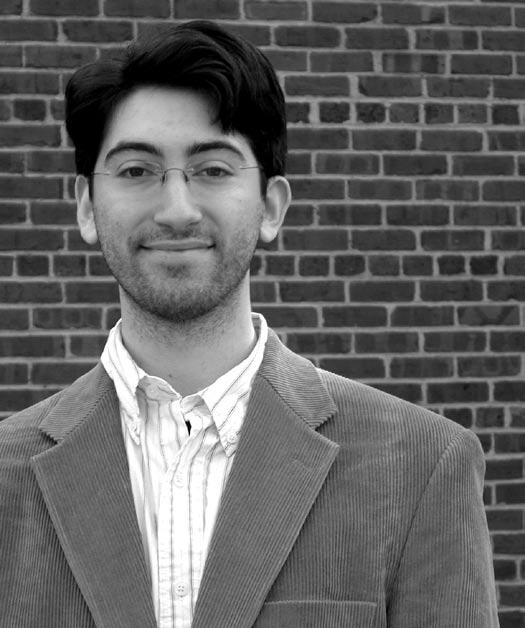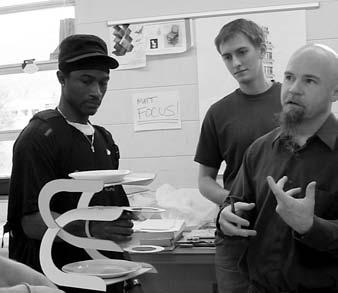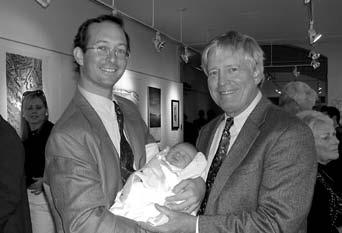
21 minute read
Sponsored Go Kart Studio Yields Good Results
This fall, Vialink Corp. sponsored a design competition in Bong-Il Jin’s Industrial Design 400 Studio. The idea came to Professor Jin and Charles Kim, VP of Design and Marketing for Vialink, while Kim was co-teaching the studio. Kim, who holds a Masters of Industrial Design from Pratt Institute in Brooklyn, New York, welcomed the opportunity. “We felt it was a requirement to provide an experience that would push students to draw upon the individual talents as well as technical and problem-solving skills they’ve acquired to date, but more importantly push the students to realize the skill sets they did not yet possess, and discover the challenge of uncovering resources needed to bridge that gap. Forcing them to apply their skills outside of the school environment gave them a great snapshot of what to expect as professionals while allowing them to discover their own particular areas that needed improvement” said Kim.
“We [Kim and Jin] thought a go-cart design project would be great given the current market consists only of crudely designed vehicles. A good analogy would be to think about the mini bike of years ago and motorcycles today with all the beautifully styled models on the market. The go-cart industry has fallen behind this wave of technical innovation and creative expression, showing no design progression in the same period. We felt young creative minds applying sound design processes would yield some interesting results. We weren’t disappointed,” Kim added. The competition had two parts. One part judged individual designs, and the second judged teamwork. Three teams consisting of three students each collectively conducted research for reference and to stimulate ideas. Each group received $500 for materials. Then each student independently generated design concepts, drawings, and concept models. Winning designs were chosen on an individual basis and teams were rewarded based on teamwork, quality of research, organization, analysis, and how well they could both communicate and validate their findings.
Advertisement
The final studio presentation was held December 3, 2004, with key Vialink staff in attendance, including President Steve Shankin, and Hardy Lim, who graduated from NC State College of Design and is continuing to pursue a master’s degree in design.
The winners of the individual portion of the competition were Chadley Jaziri, Derick Harris, and Hong-youl Choi, and each won a mountain bike (valued at $700). The winning group, Group ‘C’ (Chadley Jaziri, Hong-youl Choi, and Anthony Lee), won $600 in materials. “We are very pleased with the student’s body of work. They all worked very hard at gathering their reference data, analyzing, and organizing it into cohesive and compelling conclusions for what was required in a new design. The students all attacked the problem and came up with creative solutions while honing their presentation skills. We enjoy the opportunity to get involved with the school and to provide the help, input, and resources we can to assist in enriching the educational experience,” Kim stated.
“Many students have vision and don’t apply the necessary process. In order to be progressive, using the correct processes will dictate and ensure an emotionally compelling validated design. It is critical for designers to be able to explain and validate their designs in a clear, concise, and professional manner,” Kim added. Winning designs by (l-r) Chadley Jaziri, Derick Harris, and Hong-youl Choi


C O M M E N C E M E N T
Commencement Address by Tony Brock NC State University College of Design December 15, 2004
Graduates, Family, Dean Malecha, Faculty and Staff of the College of Design, Friends, it is truly and an honor and a pleasure to be with you today. Commencement has always been a favorite time of year for me. Graduates, congratulations on a job well done. I wish you many years of good health and prosperity in your life of design.
I graduated from NC State with a graduate degree in Graphic Design just a few years ago and I enjoy graduation much more now than the day I walked. I was exhausted and ready for a long summer of doing nothing. I remember little more than the incredible heat and humidity that day and the fact that my bike got stolen.
If I prove to be so dry and uninvolving that you completely zone out and come back thinking you missed something of importance, I will be posting my speech on the web for you all to reference (repeatedly). You are welcome to go ahead and zone out, sleep, whatever—you’ve earned this day of celebration and relief.
I think it is tradition to now say that I will be brief in my remarks even though I may not. To speed things along I have put together my personal ‘to-do’ list.
A commencement address is a complicated list. Make it memorable, speak from the heart, don’t use a lot of statistics. Not witty enough, not serious—you’ve blown your ethos. This string of words cannot help but be cliché to some, lacking to others, and far too deconstructionist, introspective, and self-conscious. For all the effort, I can’t get away from critique. I have always enjoyed the process more than the end result. There always has to be a list. Lists are the rule for such occasions. Numbered metaphors, parables, illustrations—The Art of Worldly Wisdom, The Art of Living, The I Ching and host of others—they all outline the good life in a digestible list. One of my favorites is the not-so-well-known Tony Brock, left, pictured with students during graphic design critique.
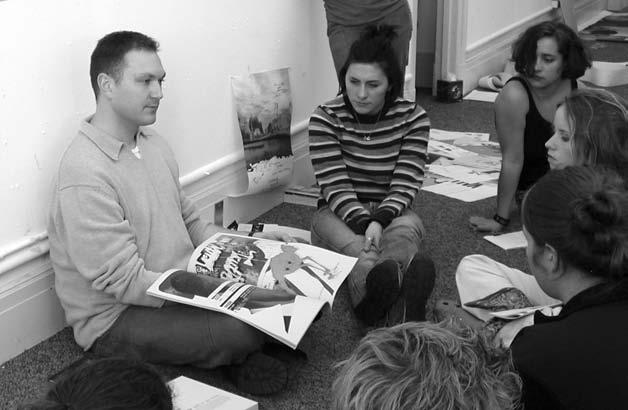
Tact, Push and Principle from 1880: What is success? It is not the mere gratification of personal ambition. To accumulate wealth, to win the highest office, to become famous for learning, eloquence, or statesmanship, may not be success. One or all of these objects may be gained, and still life be substantially a failure. Wealth acquired at the expense of principle, honors won by chicanery, learning and political distinction used for personal emolument instead of usefulness, do not constitute success. The highest success is achieved by making the most of one’s powers and opportunities.
Calvino’s Six Memos for the Next Millennium is as fine a list as one can hope for. Calvino describes the virtues of Lightness, Quickness, Exactitude, Visibility, and Multiplicity in such a way that the admonitions move beyond the act of writing to design. He suggests gradients—descriptions of extreme that transfer to one’s breadth and depth of exploration and understanding. The descriptions and details of Calvino’s list bring a level of reflection that elevates and encourages a meaningful creative life—$9.00 on Amazon. Now for my list. This is how I saw things as of 3:00pm yesterday. I don’t
think it will change much in the next 24 hours, but if they do I will update it on the website.
First, BELIEVE THE FACT: You have been given the perspective needed to continue your education. Design is in your hands, and in no more capable hands could it be. Believe this, know this, and never doubt it. For however over-the-top this may sound, it is the fact.
You have the skills to apply what you have learned. You have the skills to continue learning. You have the solutions to combat misinformation, malicious manipulation, misdirection, and a thousand pains—great and small. You have the potential to do nothing less than change how we communicate, learn, imagine, and ultimately live. That is fact.
STAY ALERT WHILE MAKING YOUR WAY TO WORK: Use your morning commute to analyze the social tendencies exhibited by your fellow drivers, riders, or walkers. This trip is repetitious and can be used to gather a great wealth of information. Your morning commute will have you analyze a grand array of lowly events and objects that would otherwise be ignored. I choose a path to the College of Design that takes me by a certain chain link fence that once had a large line of bushes growing beside it. Some are still there, but several were chopped down—I have not been able to discern why. The interesting part is that what was left was a pegboard of stumps that had grown through, in and around the chain link fence. It is a horizontal net that has caught a school of logs. I have used these suspended logs to illustrate an array of ideas—these ideas tend to be rather grand and cliché, but they are all too perfect to be ignored. It is the frozen and highlighted intersection of two disparate forms. It is the meeting point between disciplines and how that fusion of thought may remain as the strongest marker—even after the components are gone. It also speaks of collaboration and commonality. Smell the roses. What do you see in the clouds?
An early diagram of the disciplines represented in the College of Design shows a tree branching out from a common foundation. Its branches intertwine and intersect. The College has established a Ph.D. program and is planning programs in Design Studies and Animation. With the existing areas of study, these new programs greatly increase the opportunity for new ideas and collaboration. This stop on my way to work continuously reminds me of these meaningful intersections.
BUILD A SUPER COMPUTER: Your super computer will blow all others away! My first super computer was built at the North American Headquarters of Philips/Magnavox in the fall of 1993. It was composed of several paper mailing tubes with a fine array of textures, a miniature cow bell, a few cardboard boxes, a rectangular magnifying lens, and the name plate from a vintage Frigidaire refrigerator for cooling purposes—I needed to keep the system cool or the whole cubicle would most certainly have gone up in smoke. Your super computer will stave off any angst caused by a fulfilling career delayed. The super computer will keep your mind fresh when your projects do not. Those who visit you will ask what that pile of junk is and you will tell them with a strait face that it is your super computer, smile and say nothing more.
Your super computer will need constant upgrades and may grow to a scale beyond the patch of real estate that you have been assigned. That is the case with my current super computer. Many of the hard drives are at their limit even with periodic optimization. They are filled with a steadily growing collection of paper ephemera—postcards, advertisements, letters, brochures, photographs, postage stamps, zines, posters, books. Racks, bins, cabinets, frames, and cases form the architecture which my students fear will fail some day and crush me under a mound of weather-worn paper and stainless steel.
No matter how busy you are, no matter how difficult the day, you must maintain your super computer. It is what keeps you going. I have at times questioned the hours that it demands—I really should be doing something else. Something more important—like my job. Or to be more specific, why do I collect all these scraps of paper and spend hours rummaging through bookstores, antique stores, junk sales, movie sets, and the like? Then there are the hours of sorting, resorting, arranging, rearranging.
At one point I swore off hoarding this flotsam and told myself that the NC State University and State of North Carolina surplus sales were off limits. The super computer promptly crashed and I had no other choice than to upgrade it. Your super computer is demanding, but it will keep you well through your career.
STRIVE TO BE AN EQUAL OPPORTUNITY CONNOISSEUR: Don’t be a design snob. Take the hulking octagonal end table that my folks won on The Newlywed Game in 1967. I keep it, albeit at arms length, but appreciate it because it forces me to look beyond aesthetics to contemplate the full range of meanings and interrelations an artifact may possess.
I am reminded of these inter-relations and interpretations every day as the direct view from my front porch is of a vintage mobile home suspended on blocks. It takes surprisingly little to see a spare, elegant, modern geometry
cantilevered gracefully between the pines. There is no need to erase this from sight. It is a poster of economic form and economic reality worth review—worth new eyes and possibilities.
SPEAK UP AND SPEAK OUT: Share your design opinions openly. You are being hired for your opinion. If you are not being hired for your opinion go somewhere else. Get over any shyness immediately. If you do not get a three-month or six-month review then you have a great opportunity to exercise your newly found volume. This is the point at which a good job should be reviewed and rewarded.
IF IN DOUBT, GO: Don’t be in a rush, but go, if the two options are equal.
BELIEVE THAT THERE ARE NO BAD PROJECTS: The creative director and principle of the firm called it the most beautiful work of its kind. No more care had ever been put into such a design. The piece well exceeded the brief, and anyone’s expectations. It was printed by the hundreds of thousands. I was pretty happy with myself thinking that this master work had the potential to subvert advertising from within and call into question one’s very own eating habits. Maybe it would change lives for the better. Just maybe some parents would wonder if they should let junior eat that Happy Meal. This was the best McDonald’s tray liner to grace the planet. It met the goals of the client, a zoo seeking visitors; the sponsor and distributor, expressing community involvement; the ad agency, also expressing community involvement; and me, the designer, hoping to strategically subvert the fast food eating habits of parents in the four-state region between the age of 25 and 40 and their children by employing a blatant juxtaposition of a fine raw fruit and veggie diet preferred by several wild animals with that of the super-processed cholesterol feast tucked in its formaldehyde-laden, Styrofoam container. Believe that there are no bad projects.
KNOW THAT THERE ARE STINKING ROTTEN, ILL-CONCEIVED PROJECTS: That is to say there are projects that are devoid of any merit which all known skills of empathy and imagination will not excuse. In this case, expend all necessary energy to explain that the best solution is to design nothing. This is possibly the most proactive of all design solutions.
PEOPLE ARE YOUR LIVELIHOOD: By all means don’t put thoughts in their heads. You are great at analysis and evaluation of artifacts—houses, chairs, voting ballots, and the like. Do not make the mistake of transferring these talents to the private thoughts and motives of another. Your ability to master form is a mere fraction of the equation when put next to the ability to work with others. You will collaborate with everyone to some degree. Don’t mess it up. By all means exercise grace in such matters.
BE YOUR OWN MIDDLE PERSON: People are your livelihood, but never, never, never allow any of these people to get between you and your client, audience, or end-user. Account executives, account reps, evaluators, middle persons of any size, shape or form must be bypassed at all costs. Remain close to your conception of the work and the final form it takes. If you run into trouble, you can keep the middle person at bay by confusing them with your super computer. This works every time.
LIVE TO SURPRISE YOURSELF: Reinvent and renew yourself continuously. It is the only way to gain perspective on where you have been and what your capabilities are. Be patient with yourself and others—they may be working on surprising you and themselves.
And finally, WRITE A COMMENCEMENT ADDRESS: It is a gift to yourself. Write it like you are going to give it at the Spring Commencement, here in this auditorium to the graduates in five months. Only after several months coming to grips with the task and examining your motives, successes, failures, and how to honestly step up to this podium and share your findings with others will you truly get the message and have the experience that I wish for you today. There are few challenges that will fill you with such a great feeling and knowledge of purpose.
It is an honor to be here. Thank you for giving me this opportunity. I had planned to have you all file down here to the podium to get a fresh look at the audience and put yourselves in the proper shoes—those of the speaker—but I thought better of it. Better that you don’t know exactly what it looks like and what you might be in for. This bit of mystery will leave you sufficiently off balance and motivate you all the more to dredge your soul for untold days only to express a mere whisper of what you intended.
I hope you will all strive to maintain the first sparks of excitement and engagement that you experienced early in your design studies, and that you will share this energy with all those you meet in the course of your design endeavors. I trust you will all find an attentive audience.
C O L L E G E N E W S
STUDIO NEWS
Art + Design to offer Summer Studios Abroad Students will get the opportunity to study painting abroad in the magical city of castles and fairytales — Prague, Czech Republic. Art + Design Adjunct Faculty Member Kathleen Rieder is the instructor for this class. Additionally, an Art + Design Summer Studio in Ghana, West Africa, will run from May 18- June 18. Students complete projects stateside and attend an orientation session before traveling to Ghana.
New Sponsored Architecture Studio: Sacred Space in a Monastic Setting Professor Paul Tesar will lead a new sponsored studio this spring called “Continuity and Change in Architecture: Sacred Space in a Monastic Setting.” Dr. John Tector, associate dean for undergraduate studies, is co-instructor. A bequest from the late George Smart, Sr., Raleigh architect and friend of the College of Design, provided financial support for the studio. The studio project will focus on the design of a small Benedictine Monastery and to specifically probe the nature of Sacred Space. Dean Marvin Malecha and School Director Tom Barrie will participate in studio instruction. Students will also take field trips to Belmont Abbey and Mepkin Abbey.
Graphic Design Begins New Sponsored Studio The Graphic Design department is running a sponsored studio to redesign the university alumni magazine, NC State. Seniors and juniors will be working under the instruction of Visiting Lecturer Molly Renda, former designer of “DoubleTake” magazine published by the Center for Documentary Studies. USA TODAY’s Managing Editor for Graphics and Photography Richard Curtis (BPD 1972) will participate in studio reviews.
Design for Active Living Sponsored Studio An advanced, interdisciplinary studio was offered with the objective of making a contribution to the emerging field of design for active living for counteracting sedentary lifestyles and obesity. The studio was conducted by Professors Robin Moore (Landscape Architecture), Frank Harmon (Architecture), and Percy Hooper (Industrial Design). Nilda Cosco (Natural Learning Initiative) was the educational consultant. Doctoral student, Evrim Demir, was the teaching assistant.
New Master’s Degree Program in Art + Design Begins Fall 2005 The College of Design is now in the process of implementing the new Master’s of Art + Design program, which will begin in the fall of 2005. There are two concentrations available for study. The Fibers and Surface Design concentration is unique because the program lies in the combination of digital technologies with traditional hand processes in the conception and production of unique textiles. The Animation and Digital Imaging concentration will emphasize educating artists/designers to creatively and effectively utilize digital technologies, while integrating traditional artistic practices. The deadline for application is February 1 each year. For more information about the Master’s of Art + Design, contact Professor Susan Brandeis, Director of Graduate Programs for the Department of Art + Design, at susan_brandeis@ncsu.edu.
Looking for talent? In July 2004, Amy Frisz was appointed as the Career Counselor to the College of Design. She holds a Master of Science in Architecture as well as a Master of Design, both earned at the University of Cincinnati. Amy would like to make our students aware of job opportunities that may surface within your professional sphere. Please forward formal job descriptions to her at amy_ frisz@ncsu.edu. College of Design students have lots of talent; now Amy can help you find it. Update on the Center for Universal Design While federal funding for the Center for Universal Design has been discontinued, the College is pleased to report that the continuation of important activities of the Center will be continuing in a new restructured direction, which will be serving the public through extension activities. As this new organization develops, we will bring you more information through Design Life, the College’s e-mail newsletter. If you do not currently receive Design Life and would like to, please e-mail design@ncsu.edu to sign up.
Drawing Class to be Offered in Prague Former Associate Professor of Architecture Brian Shawcroft and Industrial Design Department Head Bryan Laffitte are leading an alumni/friends group trip
to Prague June 4-11 to teach drawing and sketching. Visit www.design.ncsu.edu/cont-ed/ for details.
Graphic Design Students Design Chancellor Installation Identity Under the direction of Graphic Design Department Chair Denise Gonzales Crisp, a team of students led by senior Forrest Causby have designed printed materials and collateral for the installation of NC State’s 13th Chancellor James L. Oblinger. Other designers on the team are Mia Blume (senior), Caroline Madigan, Britt Hayes, Candace Powell, and Colleen Simon.
The Design Guild held its second annual fall event Friday, October 22, from 3:30 to 6 p.m. Design Guild members and their guests were invited to a 3:30 p.m. presentation by students in the interdisciplinary studio Active Living by Design, demonstrations of the latest technology used in teaching (laser cutter, rapid prototyper, digital loom and multimedia lab) and a College update and reception sponsored by Michael Cole of ColeJenest & Stone that began at 5 p.m. in the rotunda.

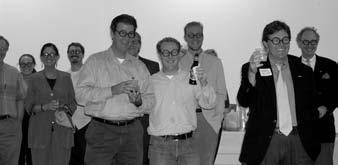
Above: Design Guild event attendees uniquely celebrate Marvin Malecha’s reappointment as Dean. Professor of Architecture Robert “Bob” Burns to Retire
Robert Paschal Burns is a native of Roxboro, N.C., and attended Wake Forest College and North Carolina State University where he received the Bachelor of Architecture degree in 1957. In that same year, he won the 44th Paris Prize in Architecture, which permitted him to study at the Ecole des Beaux Arts in Paris and to travel in Europe for a year. In 1961 he entered the Massachusetts Institute of Technology and received his Master of Architecture degree a year later.
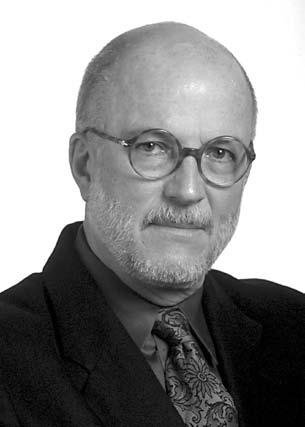
After several years working as an architect in Cambridge, contributing his talents to such projects as the MIT Student Center and the Juilliard School of Music in New York, he returned to Raleigh to join the faculty of the School of Design at NC State. He was promoted to full Professor and served as Head of the Architecture Department from 1967 to 1974 and from 1983 to 1991. He also served as Associate Dean of the School of Design from 1984 to 1990. When the School of Design became the College of Design in 2000, the Architecture Department was reorganized as the School of Architecture. Professor Burns was then appointed as Director of the School for the academic year 2001-02.
Professor Burns is a licensed architect and has received state and national recognition for his architectural design work and his academic contributions. He directed a statewide study of North Carolina court facilities for the Administrative Office of the Courts that was published in 1978 as 100 Courthouses. The recommendations from this study have helped guide the expansion and improvement of judicial facilities since that time, and the study as a whole served as a model for similar studies in other states. In 1979, Professor Burns was elected as president of the Association of Collegiate Schools of Architecture, the national organization of architectural education. He was selected as a Fellow of the American Institute of Architects in 1979 for his achievements in design and education.
He was chosen as an ACSA Distinguished Professor of architecture faculty in North America. In 1996, North Carolina State University awarded him the Alexander Quarles Holladay Medal for Excellence, the highest award made by the university in recognition of the achievements of faculty members. The Honor Society of Phi Kappa Phi bestowed its 1998 National Artist Award on Professor Burns in recognition of his achievements in the field of architecture and his “genuine interest in contributing to the education of students and to the improvement of architecture.”
Most recently, Burns was presented a 2003 Gertrude S. Carraway Award of Merit by Preservation North Carolina for his work to save the Kamphoefner House. Burns was instrumental in reviving The Student Publication and served as faculty advisor for Volume 30. In 2004, Burns received the AIA North Carolina’s Dietrick Medal for performing extraordinary service to the chapter, the profession and community.
Although Burns will retire from the classroom in the spring, he will continue as managing architect for the Pavilion for the Court of North Carolina donated to NC State by Eduardo Catalano.




